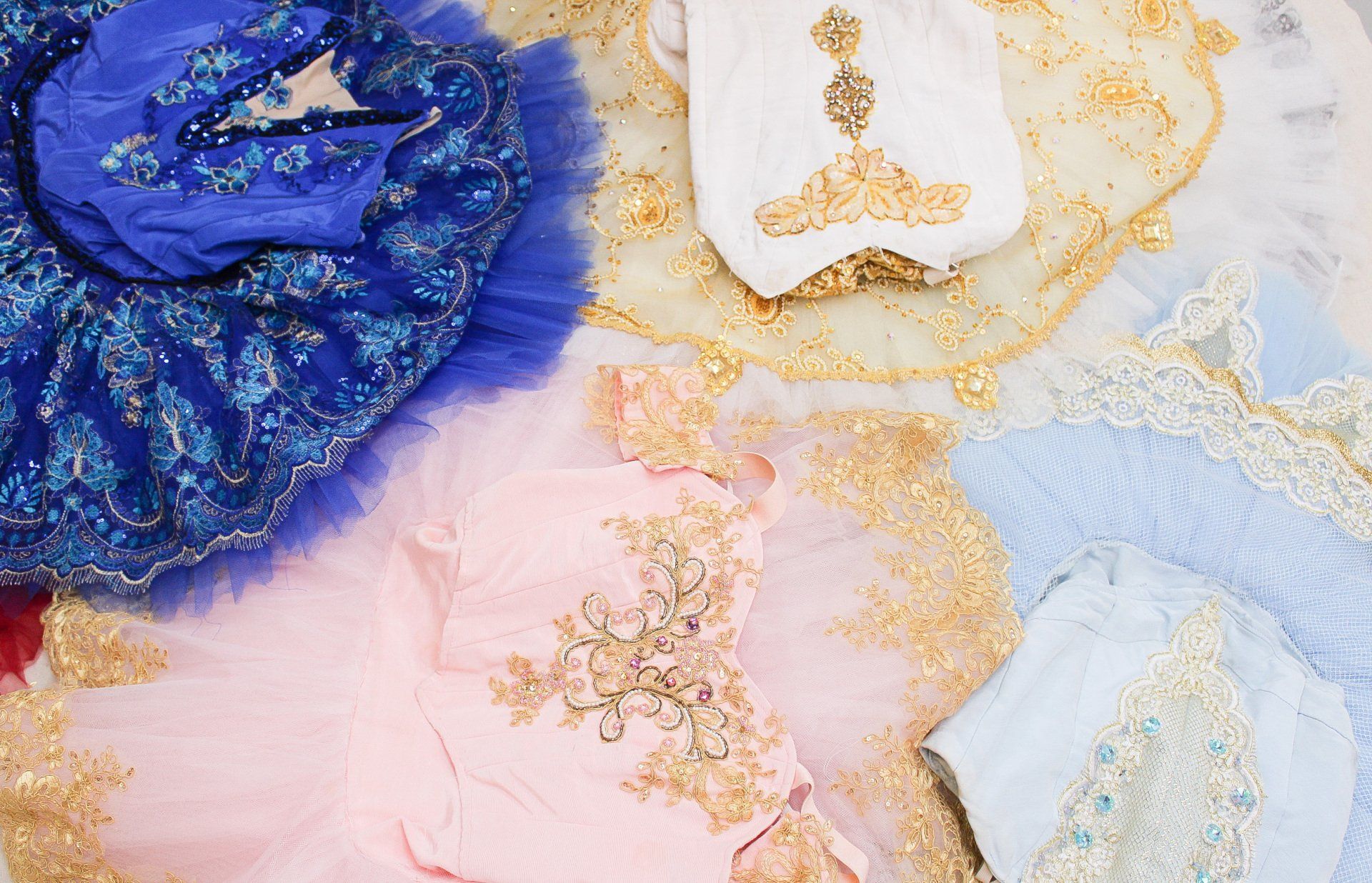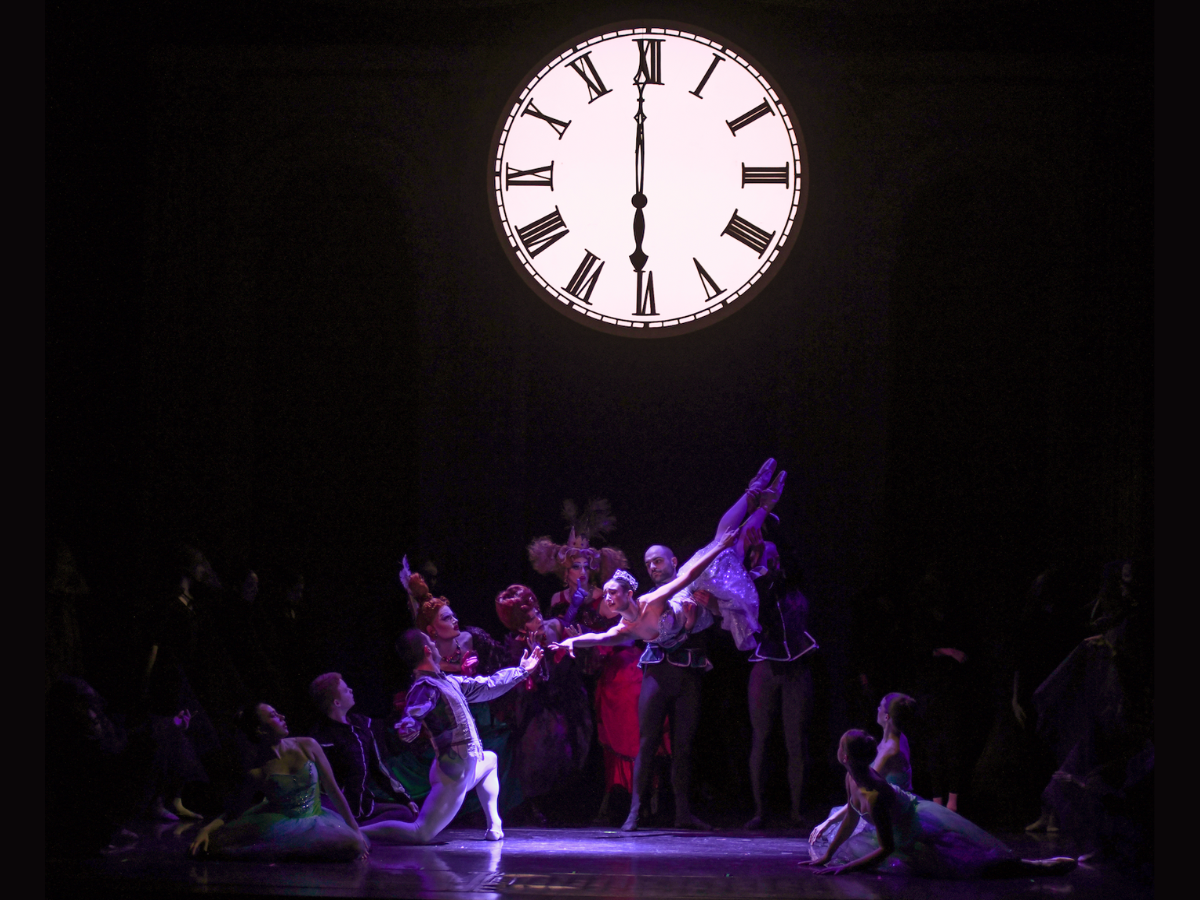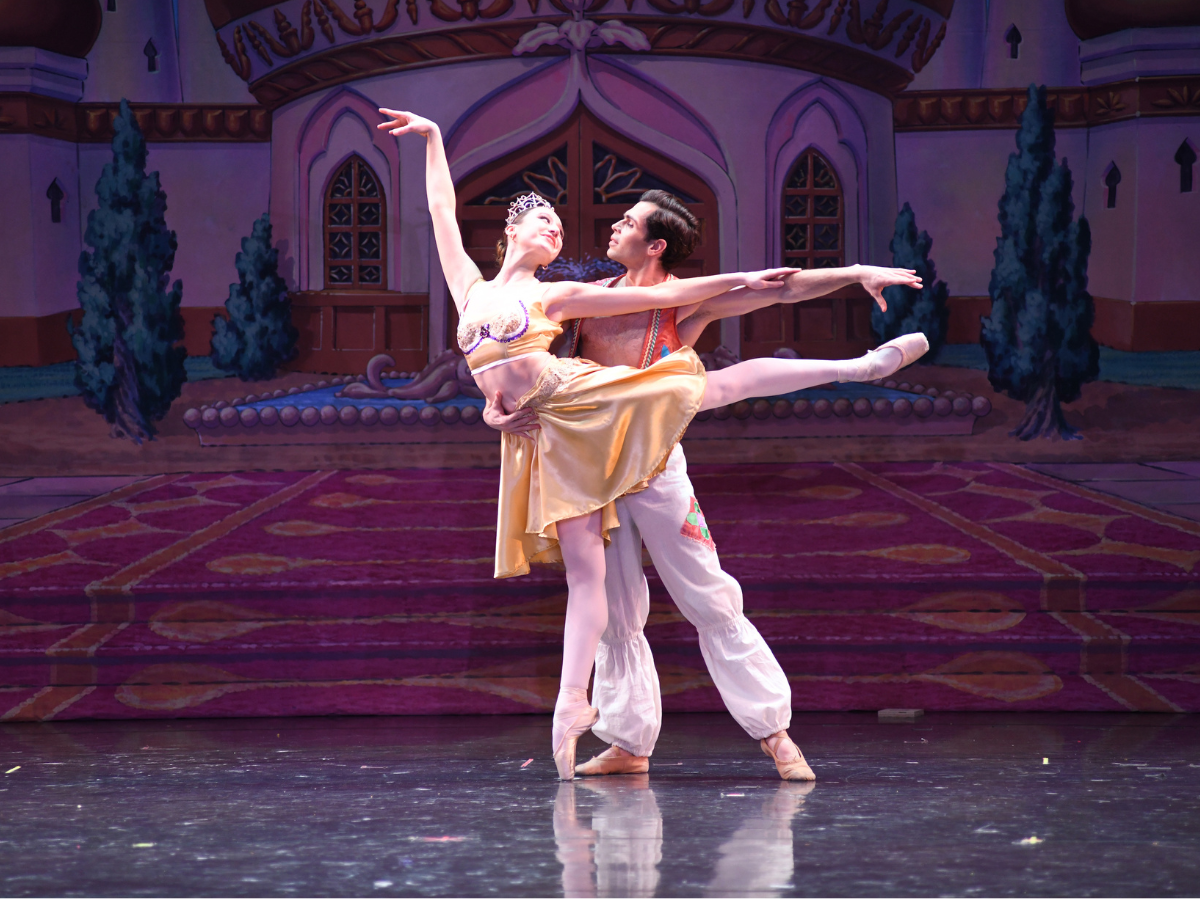The creation of a pancake or platter tutu is a lengthy process that takes even a seasoned costume designer like Tracy Dorman countless hours. To begin, Dorman will create the design concept, often in discussion with the choreographer, which is used to determine the style, color scheme, and specific details for the character and the scene in which they appear. Once the design has been chosen, fabric is selected. For a traditional tutu, 15 yards of net are needed for the skirt alone, double if made with tulle. Additional fabric is needed for the panties, bodice, and overlay.
Once the fabric has been collected, Dorman begins with cutting and sewing outer casings to the underpanties. The panties are then marked to indicate where each layer of net will be attached. The net itself is cut into strips of varying widths (typically from 2”-15” wide), and arranged in piles, one for each layer of the tutu. Each layer consists of 4 to 6 lengths of fabric depending on its location on the tutu. Dorman scallops the ends to soften rigid edges, and gathers each layer into a pleat.














